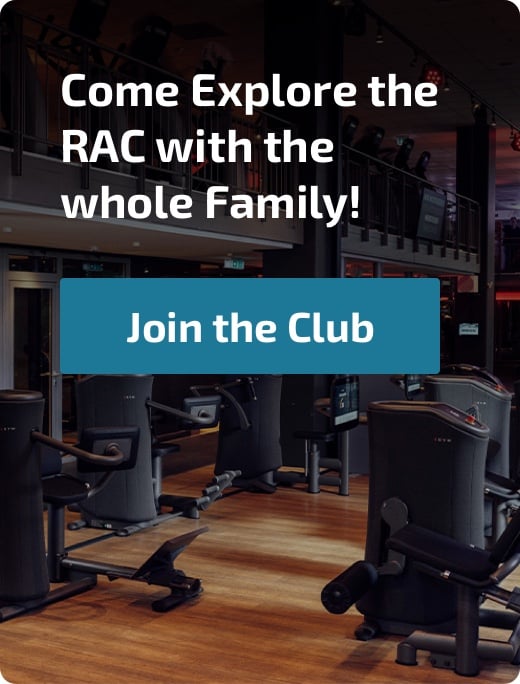The Vision
In 1991, three local businessmen had a vision of constructing a high-quality, comprehensive athletic facility in Rochester. Friends and partners in the venture: Jeff Brown, Rick Hexum and Jack Remick decided to embark on building a club. Their mission was to create a high quality facility to serve the athletic, social and recreational needs of the community’s residents. At the time, many smaller racquet clubs, particularly those in larger cities, were beginning to expand their workout offerings. Many of the clubs’ tenures were short-lived as they struggled to attract and retain members.
Having collaborated on several real estate deals, Jeff and Rick approached Jack to gauge his interest in the project. Jack was formerly an IBM engineer and one of five founders of Fastenal, an industrial and construction supplies company based in Winona. He agreed to become a partner in the project.
The partners proceeded to gather critical information: conducting a feasibility study and perusing fitness clubs in the Twin Cities. It was during this phase of planning that they met Greg Lappin, a health club consultant. Greg had been a key player as part of an investor group in opening a multi-purpose facility called Flagship Athletic Club in Eden Prairie, where he then served as its General Manager. Years later, Flagship became Lifetime Fitness Eden Prairie.
Initially, Greg thought it ludicrous to open a big club in a small town like Rochester. But once he became involved in the project, he remained committed. The partners offered him the job of General Manager, and he took it. Greg knew the business and had connections throughout the fitness industry. Greg also had a relationship with Hervey Lavoie of Ohlson/Lavoie of Denver, Colorado, an architectural firm with an international reputation in the fitness club design industry. Hervey Lavoie was employed to design what would later become the Rochester Athletic Club (RAC).
The partners secured financing, and a construction firm based in the Twin Cities was employed to partner with co-owner Rick Hexum’s construction company to take on the project. It was a joint effort with the Twin Cities firm completing the large construction tasks while Rick’s company did much of the carpentry work. Steve Egner, who supervised Rick’s crew during the construction, would later serve as the RAC’s Facilities Director.
In the fall of 1992, the groundwork was completed and the footings laid in preparation for building, which was planned for the spring of 1993.
The spring of 1993 was the wettest on record. That was also the planned start of construction on the RAC. It was so wet that spring and summer that large concrete blocks that were cabled together as mats were placed along the building. The intent of the concrete mats was to support and prevent the cranes needed for construction from sinking into the mud. And when cement was to be poured for beneath the basketball courts, the roof was left off in hopes that the cement might cure faster. But because it never seemed to stop raining, a decision was made to proceed with installing the roof. By then, all of the wet sand in the entire basketball court area had to be removed and replaced with dry sand so the project could proceed.
Jack recalls checking on the construction progress that summer following a particularly heavy rain. Overlooking the area where the locker rooms and showers would be was a sea of floating piping that previously had been installed in the ground. It was discouraging and delayed the planned opening by at least two months as well as added an additional million dollars to the cost. Mike Gostomski, another co-founder of Fastenal, joined the ownership group. The partners persevered.
Staff was hired and memberships sold in anticipation of the September 1993 opening of the new 195,000 square foot club. A model of the facility was displayed in the Galleria in downtown Rochester where staff sold memberships. The continuous rain delayed the planned opening so new hires continued to sell memberships while the club was being completed rather than work in the positions for which they were hired. Selling was a slow process with only several hundred memberships sold during the six-month time prior to the opening.
Grand Opening
Everything turned around quickly with the RAC’s first open house that was held the week prior to the club’s official opening. Memberships doubled that weekend; more memberships were sold in two days than had been sold in the previous six months. Jack surmised that the town had seen health clubs come, collect joining fees and dues, and then go out of business. People were gun shy. “We were pretty well accepted once people saw what we were doing, but they really had to kick the tires or they weren’t coming,” he said. The RAC opened its doors for business on Monday, October 18, 1993.
Though he is a founding partner, Jack’s RAC membership number is not a single digit as one might expect, rather it is representative of an important goal: the number of memberships needed to break even and pay the monthly bills in those early days. That number would be considerably higher today.
Second Generation
From waxing the water slide top to bottom to caring for children in Kid’s Club, there are few things Matt Remick has not done at the RAC. He’s quick to point out, though, that he’s not taught a tennis lesson or a group fitness class. He leaves that to the experts. Matt, the son of Jack Remick and one of Jack’s and Mary Ann’s five adult children, is the current majority owner of the RAC. Matt’s first job at the RAC was after his freshman year of college when he worked as an associate in the sport shop. That was the summer of 1993, shortly after the club had opened. Retail is intriguing and there was a need, he explained. Matt was studying entrepreneurship at the University of St. Thomas in Saint Paul at the time, thinking he might like to open a movie theater down the road. The following summer of 1994, he again worked for the RAC, but in outdoor maintenance.
After graduating from college in 1996, Matt went to work for Fastenal. At that point, Jack was on the board of directors, but no longer involved with Fastenal’s day-to-day operations. Fastenal was at the time experiencing a tremendous period of growth, tripling store openings during the period Matt was employed. It proved to be an outstanding opportunity for Matt who had an astonishingly varied work history there with 10 different jobs over the course of his 4½-year employment, beginning in purchasing, time in marketing and finally settling in development (training). While in marketing, Matt helped launch several product lines and in development ultimately became a trainer for a seven-state region, helping to train employees in the conversion of a Unix system to Windows. It was a job that required about two weeks a month of travel, but which would eventually propel him into his next opportunity at the RAC.
It was at Fastenal that Matt also met his future wife, Chantel. And when they learned they would be parents, Matt explored options that would reduce his need to travel and be away from his family so often. “I asked my dad,” he said, “if he still had any needs or openings at the RAC that might be a fit.” As luck would have it, the RAC was searching for a new software vendor because its club software provider had gone out of business. Jack freely admits that understanding software products was not a strength of his or of Greg’s, the General Manager, so they welcomed Matt’s expertise.
Matt’s opportunities and exposures at Fastenal allowed him to embark on the enormous task of installing the new Windows-based CSI system at the RAC, which is still used today. Prior to Matt’s work, the RAC had neither Internet nor e-mail capabilities.
Then about three years later, in 2003, Matt had his first taste of ownership from his father. “When I got started, I did not intend to end up with it (the RAC),” Jack explained. It was really just an investment. Once I got into it…it became more of a job than I had intended.” When Matt got involved, it became more of a long-term commitment, he said.
In 2008, Matt purchased the shares held by original founding partners, Jeff Brown and Rick Hexum. By the end of 2016, Matt held a majority share, purchased from his father.
A Pioneering New Concept — The Neighborhood
After the club had been open about 10 years, the Junior Gym for children ages 7 to 13 needed some attention and rethinking. It was a supervised, sign-in gym housed in the space where basketball court number 3 is now located. In 2004, Matt and Greg considered taking 1½ to 2 tennis courts to create a new, larger space, however, the fortunate dilemma was that the tennis program was booming and could use more courts. So in 2005, a separate building with six indoor tennis courts and additional locker room space was constructed, including increasing the family locker rooms by 50 percent, before beginning what would later become The Neighborhood.
From the beginning, the RAC had been a family-friendly club. That focus increased with the development of The Neighborhood, a 35,000 square foot activity space specifically planned for children ages 7 to 13, but designed for the enjoyment of entire families. The project was the brainchild of Matt, Greg and Hervey Lavoie, the club’s original architect, who was again engaged to help create the design. The team worked together to develop a theme and activities which included among other elements: sports activities, batting cages, bouncing and jumping apparatus, mini-golf and an artificial ice rink. The Neighborhood opened on Friday, January 6, 2006 in the space that was formerly five indoor tennis courts.
Additionally, the two were seeking a way to accommodate a cycling studio, which had been running in squash court number 2, and a women’s-only fitness area. The end result was the creation of a dedicated studio for cycling and an adults-only cardio room.
Not too long after The Neighborhood was up and running, Mayo Clinic received a sizable donation from a former patient to build an employee wellness center. The resulting multi-million dollar Dan Abraham Healthy Living Center did impact RAC memberships. Nevertheless, the RAC’s family-oriented facility, complete with The Neighborhood, family locker rooms, and other family-friendly amenities was by then deeply entrenched in the RAC’s culture and a considerable asset to retaining and attracting new members.
Renovations
Thrive — After about 15 years in business, it was time to begin making a plan for renovations and upgrades throughout the club. The sport shop, called the Top RAC at the time, needed updating and was first on the list of projects. Part of the renovation included replacing the carpet with a vinyl planking to test its durability and potential for further use in the club. It exceeded expectations and was later installed in the rest of the main lobby area. The shop also underwent a rebranding and in 2012 its name was changed to Thrive.
Front Desk — A source for creating the club’s first impressions, the Front Desk was next to be redesigned and upgraded in the spring of 2013. Fitness Floor — Probably the single largest impact on increasing membership was a change made to the fitness floor, an area used by the majority of members. The RAC had a history of purchasing a certain number of new cardio pieces every year from a variety of manufacturers. Once a user interface became available, we needed to consider what would be the best overall experience for our members, Matt explained. The ability to log on with a single user name and password with a familiar user interface, regardless of the equipment selected, was the direction chosen for simplicity and ease of use. That is when a decision was made to lease rather than purchase cardio equipment. The cardio area on the fitness floor, and the fitness and activities desks were renovated in the Fall of 2013. Then in 2017, the free weight area was renovated.
Locker Rooms — The locker rooms renovation, begun mid 2015 and completed a year later, was likely the most comprehensive renovation task, exceeding the scope of what had been anticipated, and topping $3 million. This was in part the case because no one knew what would be discovered when the walls were removed. The work was originally planned to be accomplished in thirds, however, once a third had been taken away, slowing things down and completing the work in smaller bits was necessary to reduce inconvenience for members. The RFID (radio frequency identification device) lockers selected are an expensive product but fit with the club’s mission of member experience first. The RFID device also is compatible with check-in and the PREVA fitness equipment interface.
Other upgrades have included Upper and Lower Group Fitness and Cycling Studios, including the addition of fitness-on-demand in all three, Mind Body and Pilates Studios, refinishing the basketball courts, relocating the Business Office, Active PT and office spaces. Swimming Pools — Currently, the RAC indoor pools and aquatics facilities are undergoing an extensive renovation. The work is expected to be completed within about a four-month period.
Pickleball Courts — Most recently there’s been a lot of buzz around pickleball. It seems to have come of its own; thus the RAC has created four courts to accommodate the demand. Although some other areas have slowed down, Matt has no intention to replace them until he has something better to offer. “You don’t want to be too early on the trend, so that you are investing in something that doesn’t have long-term viability,” he explained.
Matt claims no immediate plans to create another RAC campus. “I’m not necessarily enamored by being bigger, I’d rather be better,” he said. It may be the right strategy down the road, but that’s yet to be seen. Twelve acres remain available to the west of the facility for future expansion, should they be needed.
Giving Back
One of the RAC core values is to give back to the community. In that spirit, the management team has delivered Meals on Wheels weekly since the club opened. Supporting community events and initiatives, and donating to local charities and organizations are important to us. “We try to say ‘yes’ to as many things as we can and try not to turn down any requests for silent auctions and raffles,” Matt says.
Today, General Manager Brent Frueh and Assistant General Manager Sarah Stille, who direct the day-to-day activities and club operations, lead the RAC. Matt, who is a very active owner, describes his role at the RAC as giving people the tools to do their job and caring for the people, the structure and the business. “Hiring for values has worked well for us,” according to Matt. “People are here because of the skills, gifts and talents they bring to their jobs. The facility might be nice, but the people have a bigger impact on the member experience than having more machines.”



